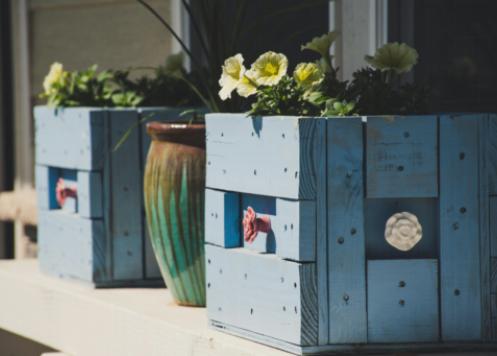Many pet owners strive to create a safe and healthy environment for their furry companions, but sometimes the smallest details can pose a threat. While plants can bring beauty and life to a home or garden, it's important to be aware of potential risks they may pose to our beloved cats and dogs. Some plants may be harmful or even toxic to pets if ingested, causing a range of symptoms from mild irritation to serious illness or even death. In order to keep our four-legged friends out of harm's way, it's crucial to be informed about which plants to avoid having around our pets.

Dangerous Plants for Both Cats and Dogs
Many plants can be harmful to pets, especially cats and dogs. It is important for pet owners to be aware of the potential dangers that certain plants can pose to their furry friends. Some plants may cause mild irritation or stomach upset, while others can be toxic and even fatal if ingested. Pets can be curious creatures and may nibble on plants out of boredom or curiosity, so it is crucial to keep toxic plants out of reach to ensure their safety.
Toxic Bulbs: Lilies and Tulips
Lilies and tulips may be beautiful additions to your garden or home, but they can pose a serious danger to your pets. These plants contain toxic compounds that can be harmful if ingested by cats or dogs. It is important to be aware of the potential risks and take precautions to keep your pets safe from these poisonous bulbs.
Harmful Common Houseplants: Pothos, Dieffenbachia
However, they can pose a threat to pets if ingested.
Pothos contains insoluble calcium oxalates, which can cause oral irritation, drooling, vomiting, and difficulty swallowing if pets chew on the leaves. Dieffenbachia, on the other hand, contains similar toxic compounds that can irritate the mouth, tongue, and throat, resulting in symptoms such as excessive drooling, difficulty breathing, and swelling of the throat.
It's important for pet owners to be aware of the potential dangers these common houseplants pose to their furry friends and take precautions to keep them out of reach. If you suspect your pet has ingested either Pothos or Dieffenbachia, it's crucial to seek immediate veterinary care to prevent further complications.
Outdoor Plants to Avoid: Sago Palm, Azalea, Rhododendron
Sago Palm, Azalea, and Rhododendron are all outdoor plants that pet owners should be aware of. Sago Palm, also known as Cycas revoluta, is a popular landscaping plant that contains toxins which can be harmful to both cats and dogs if ingested. Azaleas, a flowering shrub commonly found in gardens, can cause vomiting, diarrhea, and even more severe symptoms like cardiovascular collapse in pets. Rhododendrons, another common garden plant, can also cause gastrointestinal issues and even lead to coma or death if consumed by pets. It is important to be cautious and avoid planting these potentially dangerous outdoor plants in areas where pets have access.
Garden Threats: Oleander, Autumn Crocus
In the garden, two plants that pet owners should be cautious of are oleander and autumn crocus. Both of these plants contain toxins that can be harmful to cats and dogs if ingested.
Oleander, with its beautiful flowers and vibrant foliage, is a popular landscaping plant. However, all parts of the oleander plant are toxic, containing cardiac glycosides that can cause symptoms such as vomiting, diarrhea, and even cardiac abnormalities in pets. Ingesting even a small amount of oleander can be dangerous for animals, so it is best to keep this plant out of reach or avoid planting it altogether if you have pets.
Autumn crocus, also known as meadow saffron, is another plant that pet owners should be wary of. While it may be tempting to add this plant to your garden for its colorful blooms, autumn crocus contains colchicine, a toxic alkaloid that can cause symptoms such as vomiting, diarrhea, and organ damage in pets. Ingesting even a small amount of autumn crocus can be fatal for animals, so it is important to keep this plant away from areas where pets have access.
In conclusion, when it comes to creating a safe environment for our pets, it is crucial to be aware of the potential dangers that certain plants can pose. Oleander and autumn crocus are just two examples of garden threats that pet owners should be cautious of, as their toxins can be harmful if ingested by cats and dogs. By being informed and proactive, we can help ensure the health and safety of our furry companions.
Plants with Toxic Leaves: Caladium, Peace Lily
Caladium and Peace Lily are two popular houseplants that many people have in their homes. While they may add beauty to your living space, it’s important to be aware that both of these plants have toxic leaves that can be harmful to pets if ingested. It is crucial to keep these plants out of reach of curious cats and dogs to prevent any accidental poisoning incidents. If you have pets, it may be best to opt for pet-friendly plants to ensure the safety and well-being of your furry friends.
Irritating Plants: Amaryllis, Chrysanthemum
Amaryllis bulbs contain toxins that can cause vomiting, diarrhea, abdominal pain, and even tremors in pets. Chrysanthemums, on the other hand, contain pyrethrins that can cause drooling, vomiting, diarrhea, and even skin irritation upon contact. It's important to keep these plants out of reach of pets to prevent any potential harm or discomfort.

